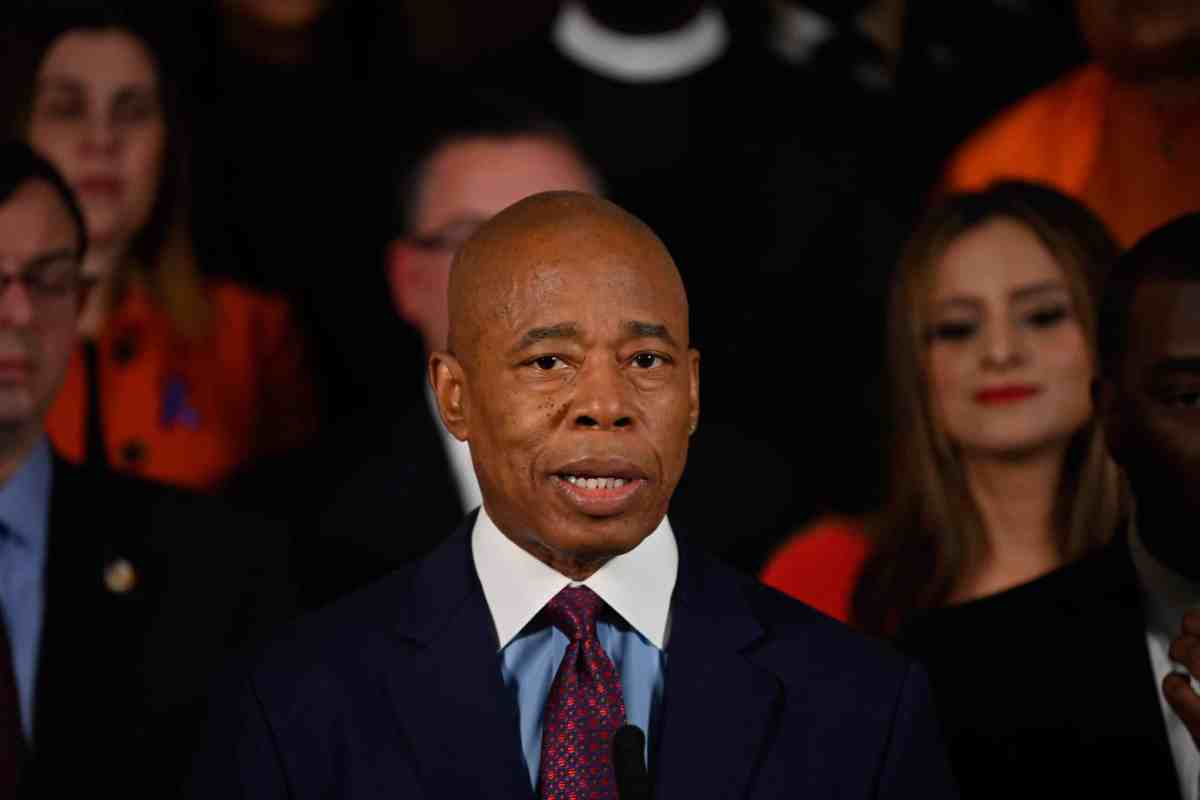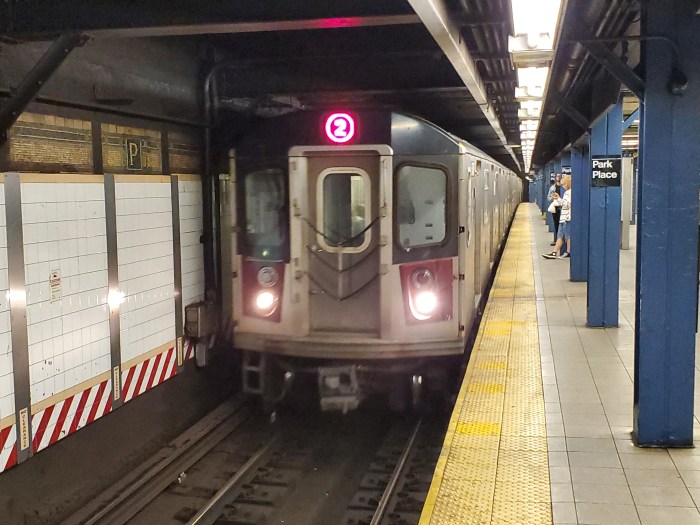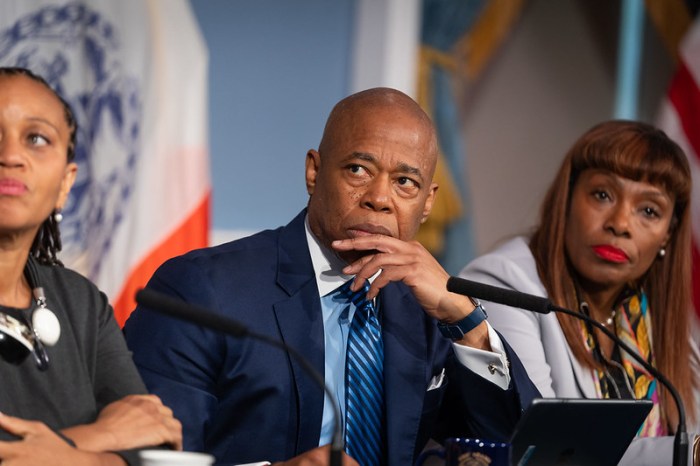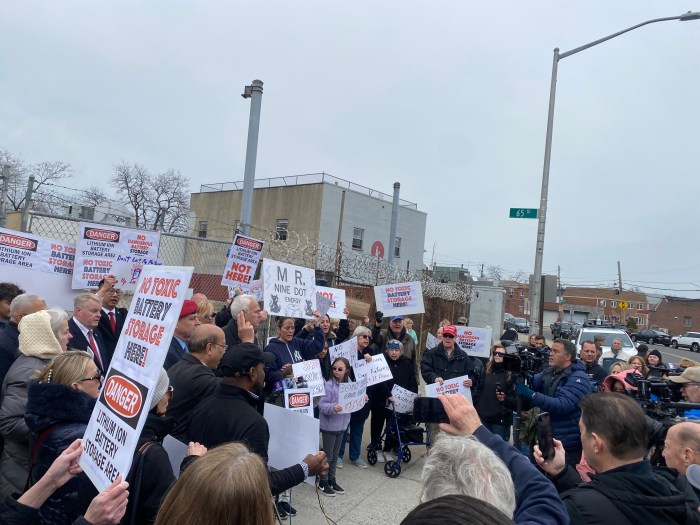Roughly 30% of Mayor Eric Adams’ latest round of budget cuts could “substantially impact” New Yorkers’ lives, a report released Thursday by the city’s Independent Budget Office (IBO) revealed.
The report analyzes the impact of the mayor’s move to slash 5% from every city agency’s budget as his administration says it is staring down a projected $7.1 billion budget deficit over the next fiscal year — Fiscal Year 2025. The IBO, however, argues that the gap is likely to be $1.8 billion, $5.3 billion less than the projection from the mayor’s office.
Adams has chiefly blamed his fiscal woes on the escalating cost of providing services for 150,000 newly arrived migrants; the drying up of pandemic-era federal aid; an anticipated slowdown in revenue over the coming years; and the cost of settling multi-year contracts with public sector unions.
The mayor often refers to his belt-tightening measures as the “Program to Eliminate the Gap” (PEG).
In its analysis, the IBO found that approximately 30% — or $2.3 billion — of the mayor’s $7.6 billion reductions over this fiscal year and the following three, contained in the plan, would fall into the category of “Human Impact PEGs.” The category includes cuts that would affect vulnerable groups like public school students and those in the criminal justice system, the report found.
“According to IBO’s analysis, 30% of the proposed PEGs could have tangible direct effects on residents of New York City and could potentially impact various vulnerable populations throughout the city,” said IBO spokesperson Malek Al-Shammary, in a statement.
Additionally, the trims could curtail the ability of agencies like the NYPD, public library systems and cultural institutions to provide vital services.
The mayor’s office, however, is playing down the cuts.
OMB Director Jacques Jiha said during a City Council Hearing earlier this week that direct program cuts only constituted 18% of the PEG. He said the other 82% of the savings came from cost re-estimates and eliminating vacant positions.
Mayoral spokesperson Charles Lutvak did not specifically respond to the IBO report, instead referring a reporter to comments the mayor made on his monthly WBLS radio show on Sunday. During the show, the mayor repeated what has become a frequent refrain: that he is forced to make the budget cuts to balance the city’s books due to the lack of federal reimbursement for what it has spent on the migrant crisis.
“Harsh and unfair cuts must be made to the city’s budget that I absolutely do not want to make,” Adams said on Sunday. “This is not the budget I want. New Yorkers are angry. I hear it, I see it, I feel it. And you know what? I’m angry, too.”
The areas that account for the largest portions of the Human Impact PEGs across the four years include public safety, at 40%, or $915 million; student and youth services, at 24%, or $545 million; and programs for those in the criminal justice system, at 18%, or $414 million — according to the report.
The public safety cuts were mainly gleaned from the cancellation of new NYPD academy classes and the elimination of 647 vacant civilian positions at the department, including school safety agents, the report found. Another 266 unfilled civilian posts are being nixed at the Fire Department, due to a hiring freeze.
When it comes to youth services, the reductions at the city Department of Education (DOE) affect early childhood programs and Community Schools — schools that contract with community-based organizations to provide students with wrap-around services, IBO reported.
The early childhood education cut, $120 million for each of the next three fiscal years, includes $82 million being clawed back from the DOE’s Universal Pre-K and 3-K programs, which came from eliminating tens of thousands of unfilled seats. Funding for Community Schools, meanwhile, is getting chopped by $10 million this fiscal year — FY24 — and $8 million for each of the next three.
The Mayor’s Office of Criminal Justice (MOCJ) saw a 17% — or roughly $34 million — yearly cut from alternatives to incarceration, reentry programs and supervised release programs, according to the budget watchdog. The cuts were made, the mayor’s budget office says, because the programs were underutilized.
Other direct impacts of the cuts include the ending of Sunday service at most public library branches and a reduction in the number of litter baskets in the outer boroughs.
Since Adams announced the cuts with his November Financial Plan last month, they have drawn widespread backlash. Opponents — including City Council members, labor unions and activists — have blasted the mayor’s reductions as dangerous and avoidable.
The unpopular cuts even drove the city’s largest municipal union, District Council 37 (DC37), to file a lawsuit against Adams over the cost-saving measure on Wednesday.
Council Finance Committee Chair Justin Brannan, in an emailed statement, expressed that he is not at all surprised by IBO’s findings.
“Breaking news: water is wet,” Brannan quipped. “If you make cuts to programs that New Yorkers rely on, New Yorkers will suffer. And who relies most on these programs? Our most vulnerable neighbors, then our kids, our seniors, and our working families. Of course the PEGs will have a real impact on New Yorkers. Important to remember these aren’t just numbers on a spreadsheet.”
Read more: Sunnyside Blaze Sparks Immediate Community Support





































